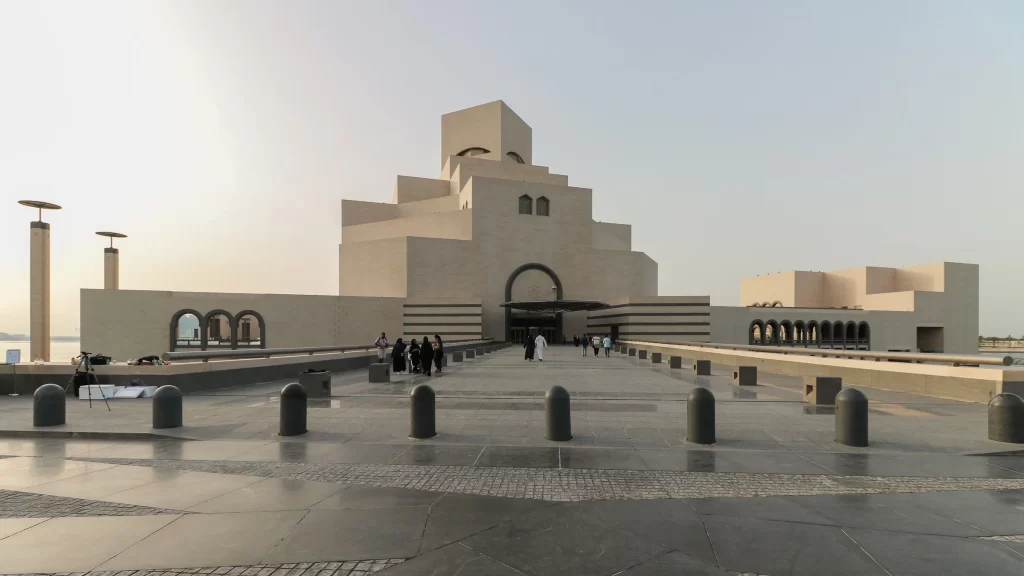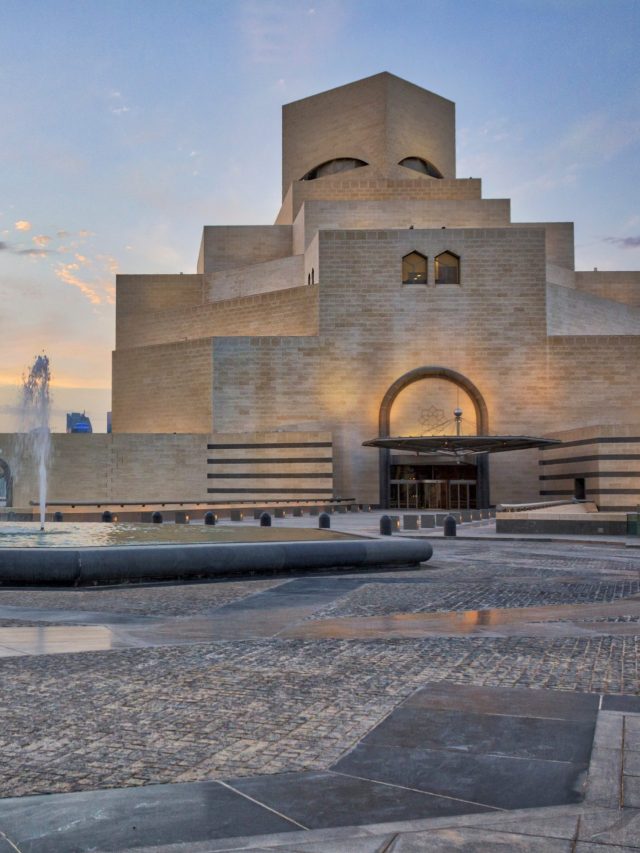The Museum of Islamic Art Doha (MIA) stands as a testament to the remarkable fusion of traditional Islamic design and contemporary architectural innovation. Located on the picturesque Corniche of Doha, Qatar, this architectural masterpiece is not only a repository of Islamic art but also a beacon of modern design excellence. It is also certified (November 2022) as the first carbon-neutral museum in the Middle East region.
The Museum of Islamic Art
The Doha Museum of Islamic Art designer is the acclaimed Chinese American architect Ieoh Ming Pei who devised an iconic modern structure to house over 1,300 years of Islamic art and heritage. It covers almost 7,000 sq m of land. Inaugurated on 8 December 2008, the Doha Museum of Islamic Art designer, Jean-Michel Wilmotte is credited for the interiors. Another Doha Museum of Islamic Art designer was the Turkish company, Baytur Constructions.

It is said that it took over $800 million to build MIA. The Museum of Islamic Art is not only a repository but an educational institute. They host community events to promote awareness of and appreciation for Islamic art. In 2021, the Museum of Islamic Art Doha underwent a ten-month facilities enhancement. This time around, the 18 permanent galleries became the focal point. It was reopened on 5 October 2022. MIA is popularly referred to as ‘miniature Qatar.’ At present, it is under the directorship of Shaika Nasser Al-Nassr.
Concept and Vision
The vision for the Museum of Islamic Art was to celebrate the neo-vernacular Qatari architecture. IM Pei, renowned for his work on the Louvre Pyramid in Paris, was tasked with this ambitious project. To appeal to Islamic sensibilities, the then 91-year-old architect, came out of retirement and visited the Grand Mosque (Córdoba), Fatehpur Sikri (India), the Umayyad Great Mosque (Damascus, Syria) and the Ribat Fortresses (Tunisia).
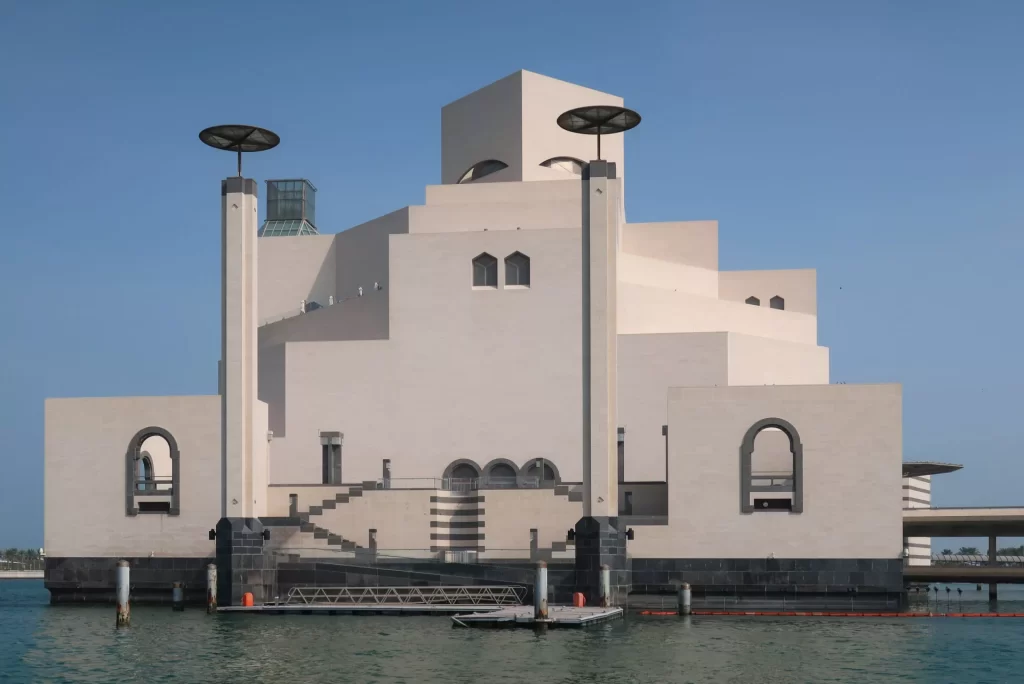
Pei eventually found his design inspiration for the Museum of Islamic Art Doha in the Ahmad Ibn Tulun Mosque, Cairo, Egypt. He was fascinated with the 13th-century ‘sabil’ (ablutions fountain). The ‘sabil’ presented a geometric progression. To him, it was an abstract cubist rendition of Islamic architecture.
Architectural Details of the Museum of Islamic Art Doha
The Doha Museum of Islamic Art designer, IM Pei, envisioned the building as a waterfront, amalgamating traditional Islamic architecture with the newer technologies and building materials of the 21st century. The five-storeyed complex (4,225 sq m) is located on an artificial island; Doha’s Corniche, about 60m into the sea. The adjacent two-storeyed education wing (2,694 sq m) is connected by a large central courtyard.
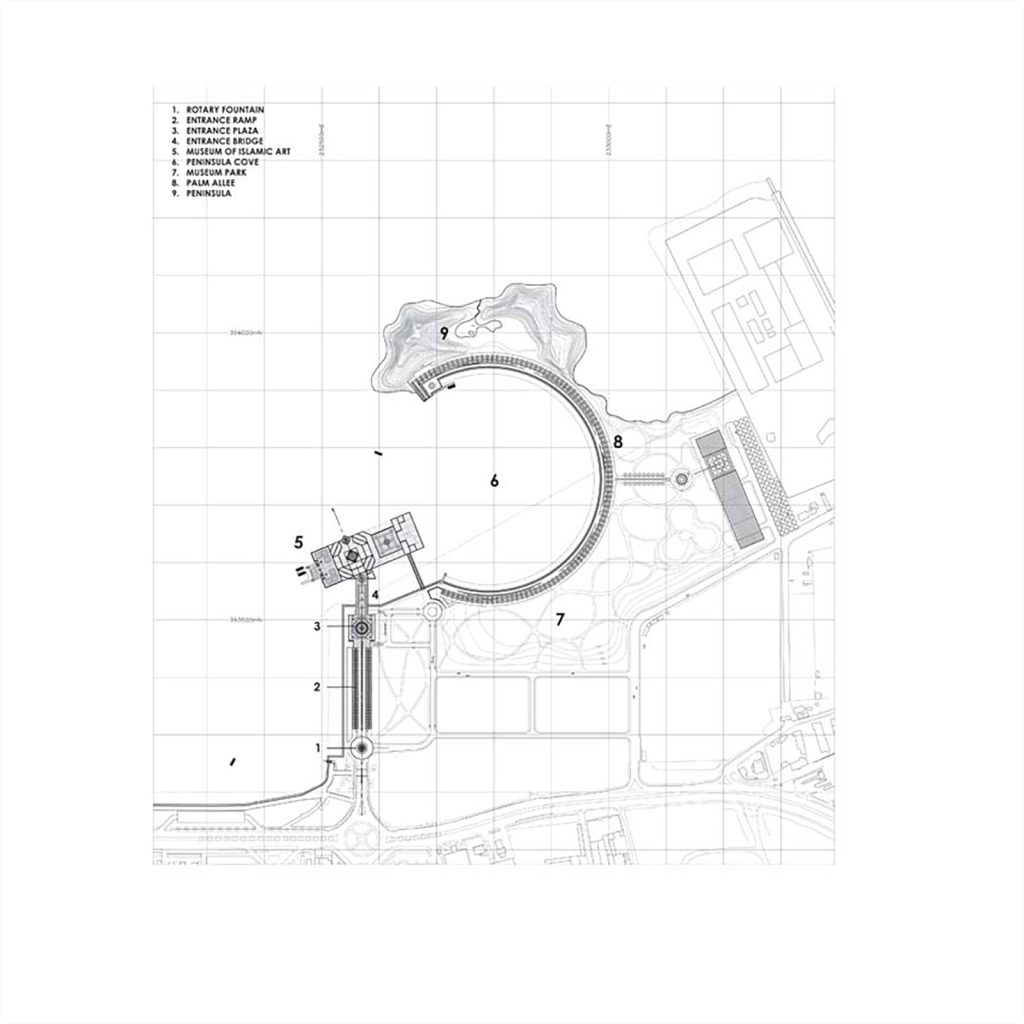
The Museum of Islamic Art also features a library, nine classrooms, workshops, study areas, technical and storage facilities, a gift shop, a restaurant and bar, and an auditorium with state-of-the-art audiovisual equipment. The 430 sq m auditorium accommodates 197 spectators.
1. Exterior Design and Materials
The main building of the Museum of Islamic Art Doha is nearly windowless. It is designed in an angular style, with imposing forms. The building’s exterior is made of stainless steel (Germany), Jet Mist granite (USA), and Magny and Chamesson limestone (France). The exterior’s cream-coloured limestone captures the variations in light and shade throughout the day.

To create a grand entrance for guests arriving by boat, the Museum’s west side boat dock is marked by two additional lanterns, each standing at a height of 100 feet. MIA’s overall size diminishes as you get closer, and its forms more grander. The bridge is positioned diagonally to the entrance, with rows of tall palm trees. You can also see two tiny arched windows above the entrance. These give the building a sense of proportion.
2. Substructure
To make the substructure, a concrete pile enclosure was used after dehydration and temporary construction. In addition, piles, big pile caps, grade beams, pressure grade slabs, new coves, a peninsula, and deep wells had to be built to redesign the coastline. The Museum of Islamic Art designer installed 2.5 km prefabricated rock cladding, 30,000 cb m of concrete, and 200,000 cb m of structural fill.
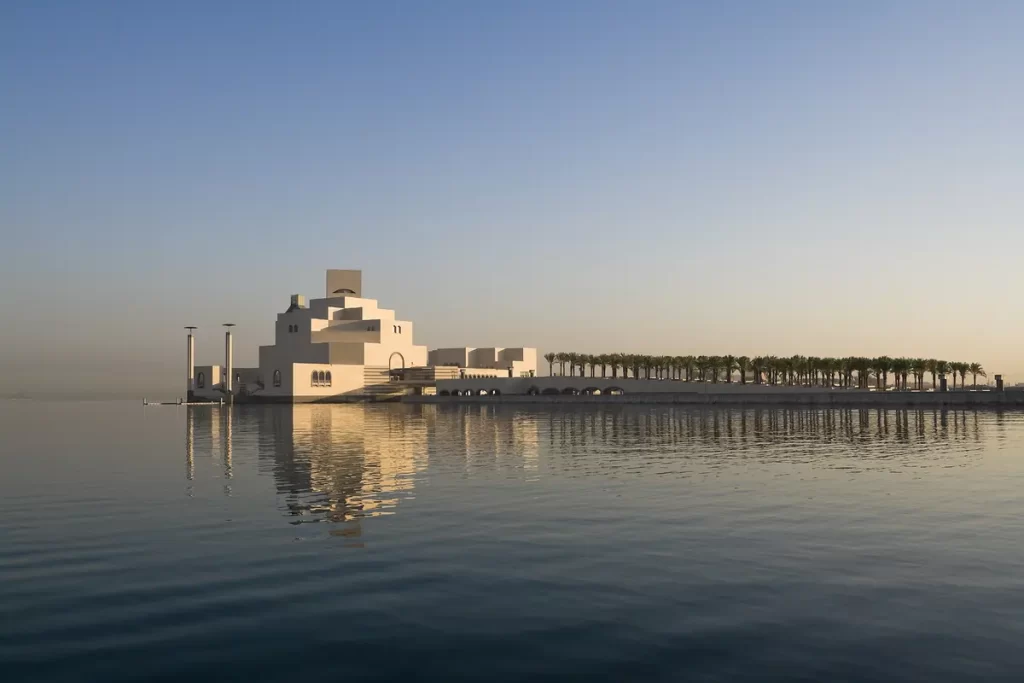
3. Central Atrium
At the heart of the Museum of Islamic Art is a grand central atrium. It is located in the central tower. It is crowned by a striking dome that measures 12 m in diameter. The stainless steel dome’s design features latticework. The first floor can be accessed by a curved double staircase located in the middle of the atrium. The U-shaped balconies cantilever around it. Glass-floored bridges span the cafeteria. It is accompanied by the gushing water sound from the octagonal black marble fountain.
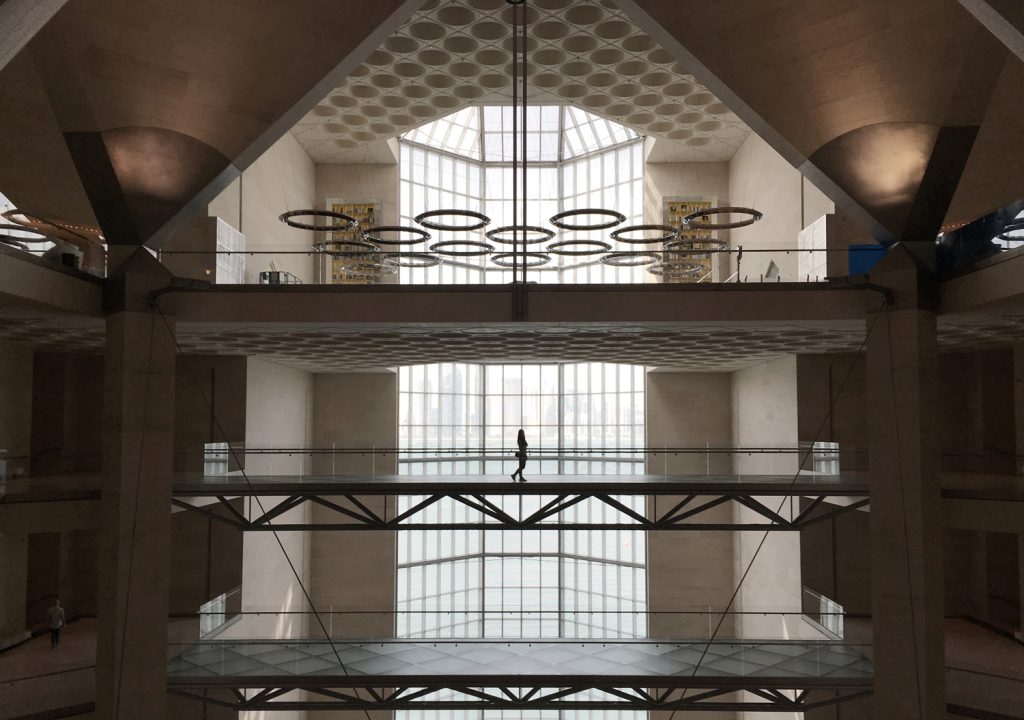
An elaborate circular metal chandelier floats above. Patterned light inside the faceted dome is captured and reflected by an oculus at the top. The dome’s descent is changed by a geometric matrix from a circle to an octagon, then a square, and finally, four triangular fins that lean at different heights to form the atrium’s columns.
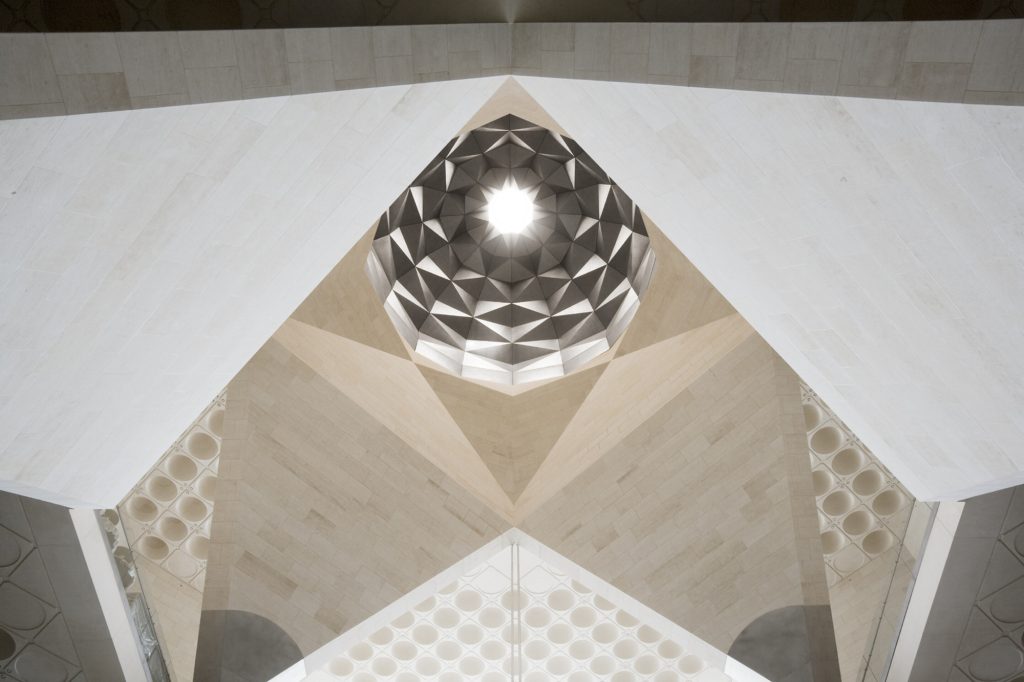
The drum that supports it rests on three-storey high thin columns. It extends down to meet a wall that encloses an office floor before leaning on a series of shorter columns. Neither the building nor the large window is oriented toward Mecca by the Museum of Islamic Art designer. It is uncommon for the ‘mihrab, to be designed as a window overlooking the ‘qibla.’ The prayer areas automatically align correctly and rotate slightly.
4. Geometric Precision
One of the most remarkable aspects of the Museum of Islamic Art’s design is its emphasis on geometric precision. The building’s layout is based on a precise grid system, which ensures that every element is symmetrical, creating a harmonious order. The MIA has often been called the marvel of postmodern architecture.
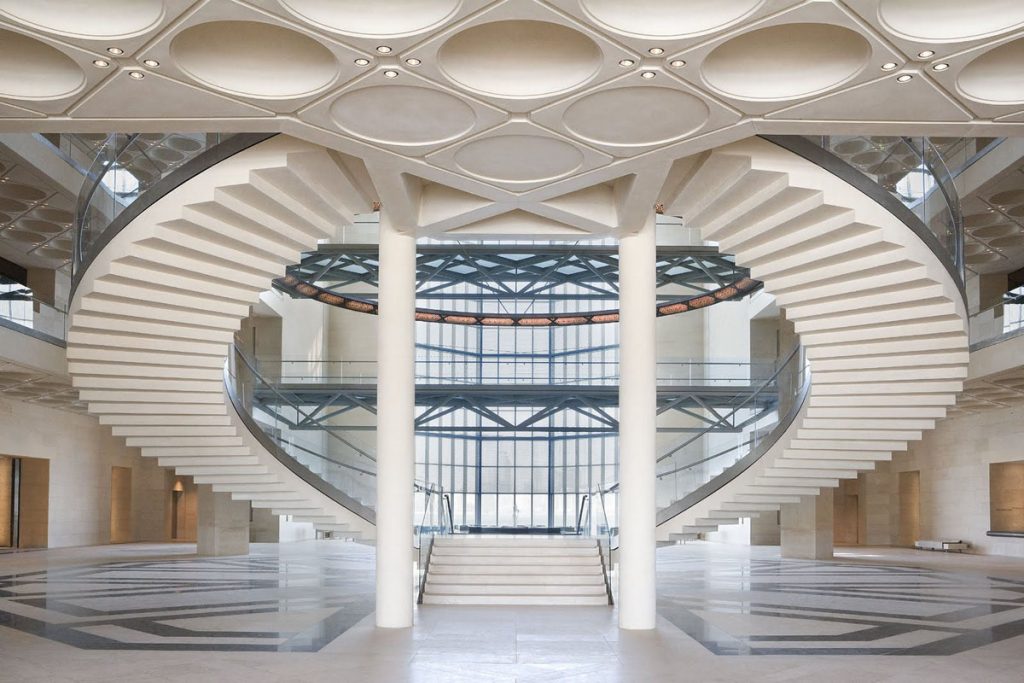
The Interior Design of the Museum of Islamic Art Doha
The Museum of Islamic Art Doha inside is as extravagant as the outside. An elaborate metal canopy greets the visitor. The interior showcases architectural concrete pieces that resemble tiny domes that are set into the space and polished using separate moulds. Wilmotte designed custom furniture for the museum. He used high-quality dark materials with walls lined with darkly carved grey stones that are all bathed in a seductive and cosy light.
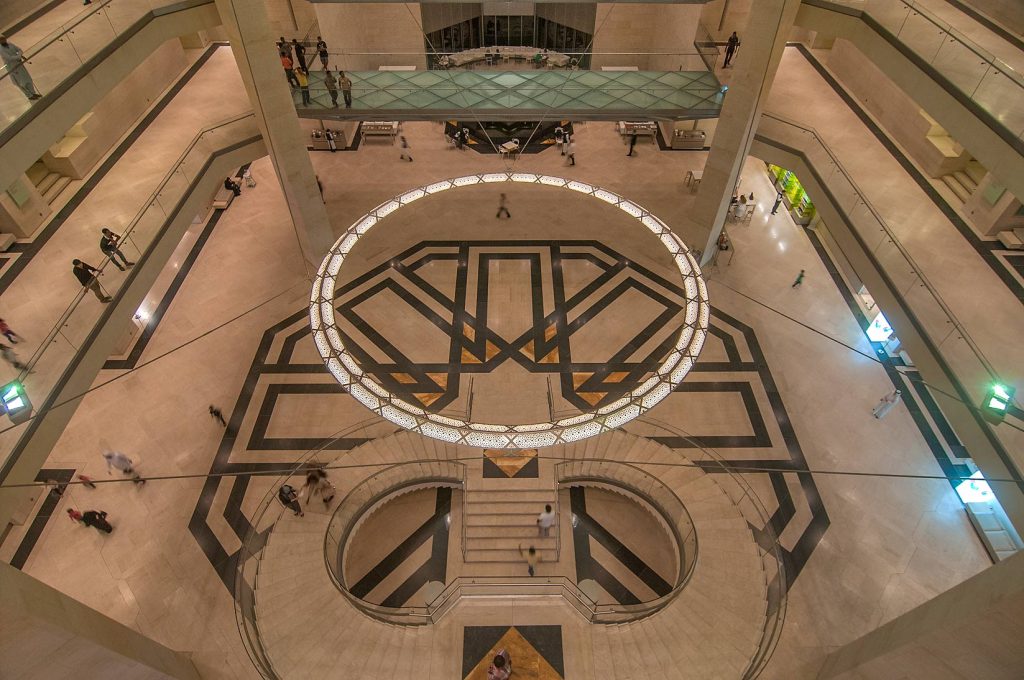
1. Gallery Spaces
Inside the Museum of Islamic Art, visitors are greeted by a series of spacious gallery areas that showcase the museum’s extensive collection of Islamic art. The permanent gallery covers almost 3,100 sq m, whereas the gallery for special exhibition spans 750 sq m. They use buffed and treated Brazilian lacewood (Louro Faya) which renders it a distinct metallic look. You may also notice the dark grey porphyry stone.

2. Lighting and Acoustics
The Lighting and Acoustics in the Museum of Islamic Art Doha were done by ‘Isometrix Lighting + Design’ and ‘SG Conseil’ respectively. Natural light is carefully controlled through a series of skylights and clerestory windows, which provide a soft, diffused illumination. The display cases are made of anti-reflective glass and are lit by fibre optics. The gallery spaces are designed to minimize noise and echo. The reflected light gives the space a sense of rhythm and movement. The north side’s 45-m-tall window provides breathtaking bay views in all directions.
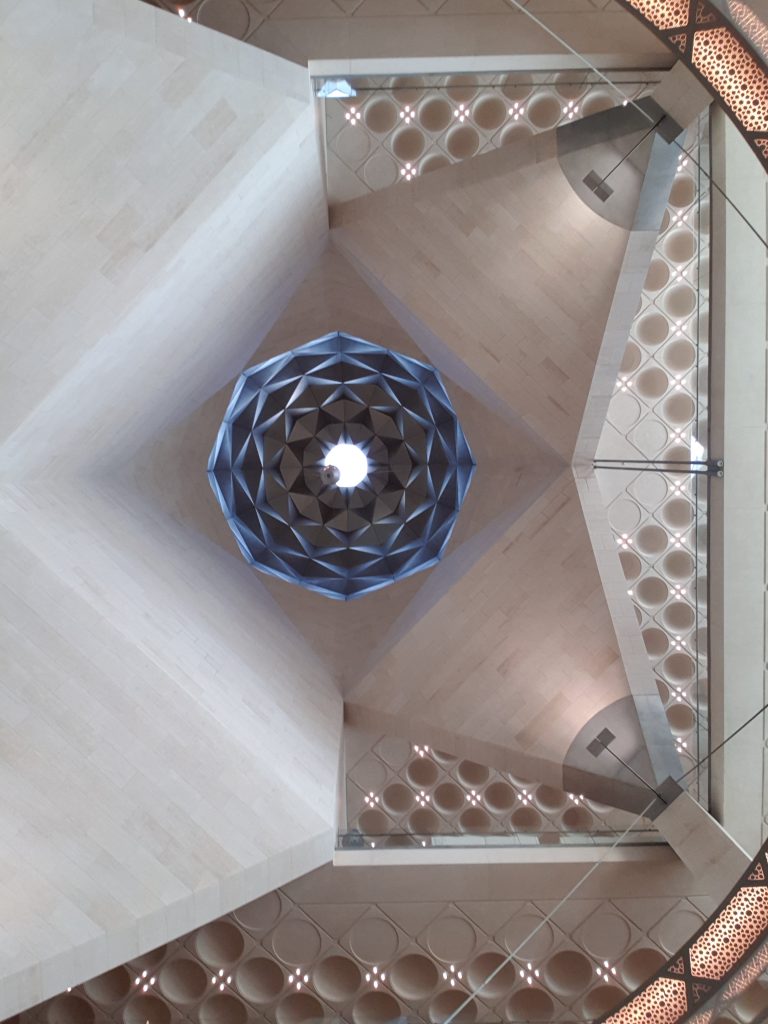
Exhibits at the Museum of Islamic Art Doha
The galleries at MIA display a wide range of exhibits including Arabic calligraphy, ceramics, jewellery, ivory, miniatures, textiles, glass, and woodwork. Around 800 artefacts hail from the national state collection whereas the rest have been donated by the current monarch, the Al Thani family. Some of the popular Museum of Islamic Art exhibits include Iranian clothing items, Indian rubies, an antique Syrian frankincense burner, a 14th-century North African Koran, Iraqi vessels, and pieces of ivory, silk, gold, and gems.
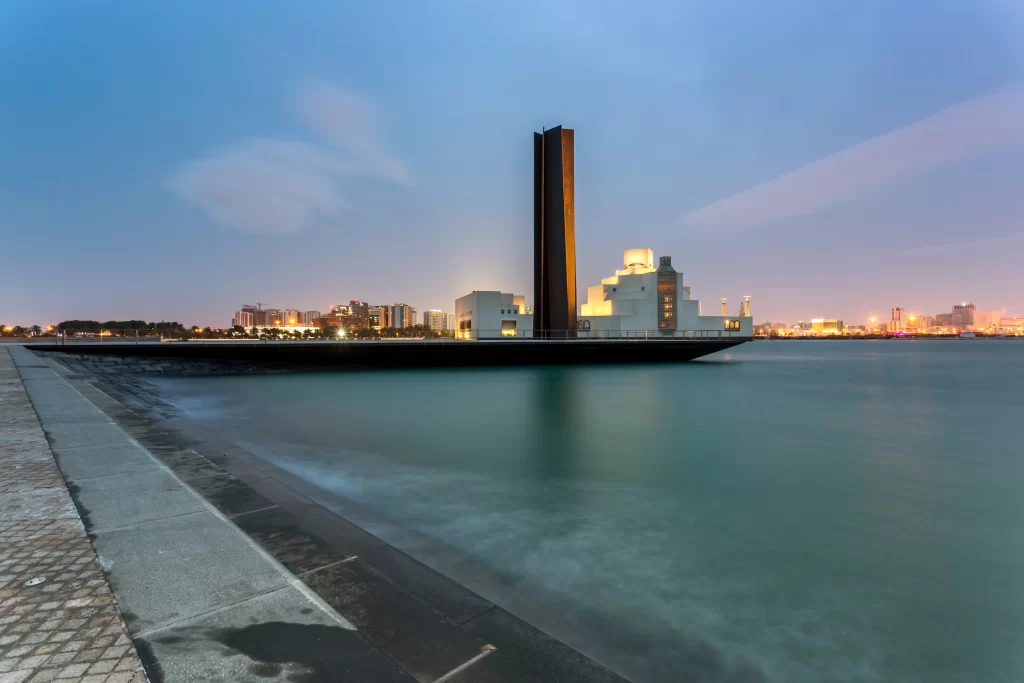
The Museum of Islamic Art also displays a page of the ‘Blue Quran,’ dyed in indigo and created in the 11th century. The adjacent MIA Park, a waterfront open space has cafes, a kids’ play area, and Richard Serra‘s vertical steel sculpture ‘7.’.
The Cultural Significance
Since its opening, the Museum of Islamic Art Doha has become a landmark in the city’s cultural landscape. Its striking design and world-class collection have attracted visitors from around the globe, enhancing Doha’s reputation as a centre of cultural and artistic excellence. Apart from MIA, the Qatari government has started developing plans for additional museums, one for photography, and one chronicling the nation’s history. Head chef Alain Ducasse’s restaurant ‘IDAM’ is housed within the museum serving French Mediterranean cuisine. They also provide master classes in food preparation and artisanal bread.
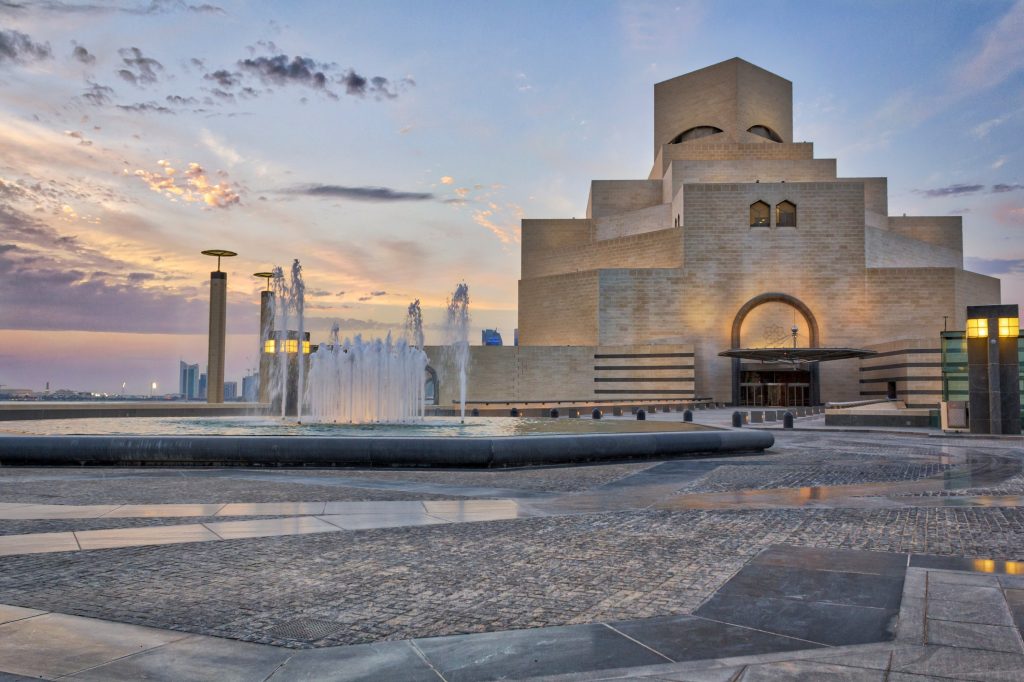
Whether you are an art enthusiast, an architecture aficionado, or simply a curious traveller, a visit to the Museum of Islamic Art Doha offers a unique opportunity to explore the intersection of tradition and innovation in one of the world’s most stunning cultural institutions.
Image Courtesy – Dezeen

